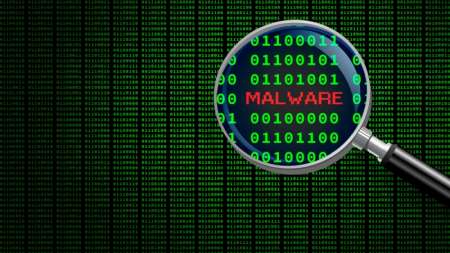John Bolton, President Trump’s national security adviser, has eliminated the White House cybersecurity coordinator position. […]
In a previously announced move, the Pentagon elevated the U.S. Cyber Command to a full unified command. This reflects the universal role cyber operations–and potential cyber threats–have come to play across the range of military activities, and how relatively quickly virtual technologies have changed the game. […]
Seventy percent of energy industry professionals are concerned that a successful cyberattack against energy or oil and gas companies could cause a catastrophic failure, according to a survey released Wednesday. […]
While members of Congress discussed the nationwide technical skills gap at a hearing on Wednesday, tech-industry advocates on Capitol Hill looked for ways to reduce the cybersecurity sector’s gender gap. […]
John Bolton, President Trump’s national security adviser, may not be hunting for a replacement for Rob Joyce, the current White House cybersecurity coordinator, who previously announced he would leave his post and return to the National Security Agency later this month. […]
Artificial intelligence (AI) could increase global GDP by $15.7 trillion by 2030, according to PricewaterhouseCoopers. The prevalence of AI in modern society is growing at a rapid pace – and the Federal government needs to keep up. […]
A new government-wide strategic plan on Category Management covering FY18-FY20 and released in late April aligns with the President’s Management Agenda and declares the Enterprise Infrastructure Solutions contracting vehicle one of its key IT components. […]
Malware-pushing criminals are no longer finding as much profit in email-based exploits, but the National Institute of Standards and Technology says cyber-crime perpetrators may find that easier lines of attack lie in infiltrating social media platforms. […]
Military cybersecurity officials said at MeriTalk’s Tenable GovEdge 2018 event on May 3 that they can focus more on taking the fight to adversaries if the private sector can continue to provide the military with strong network defense technologies. […]
Defense issues expert Peter Singer warned this week that cybersecurity deterrence strategies put in place over the past decade are collapsing, and that the government’s response to security strategies needs to be rethought. […]
A Federal CISO handbook is due out soon from the CISO Council, said Jeff Wagner, Acting Chief Information Security Officer at the Office of Personnel Management. The new guidance aims to cut down on technical language barriers and standardize compliance formatting across the Federal enterprise. […]
It’s no secret that Chinese companies are major suppliers to U.S. technology companies that serve the Federal government, and a report issued last month says the Chinese government is leveraging that manufacturing capability to create significant security risks across the U.S. Federal enterprise. […]
The Department of Homeland Security is providing weekly vulnerability scorecards to 106 Federal agencies every Monday, said Rob Karas, the agency’s Director of National Cybersecurity Assessments and Technical Services-NCATS, at the Tenable GovEdge 2018 Conference Thursday. […]
You can hear the clatter from the White House as it hammers out the details of a long-awaited national cyber security strategy. But, the Department of Defense (DoD) cyber policy strategists are writing out advice to keep Federal agencies safe from hackers’ webs today. […]
Tenable announced that it recently discovered a critical remote code execution vulnerability in two Schneider Electric applications used in manufacturing, oil and gas, water, automation, and wind and solar power facilities. […]
A gathering of crows is called a murder. A bunch of kangaroos is called a mob. And a gathering of IGs is–no, not a nuisance–it’s called CIGIE–the Council of Inspectors General on Integrity and Efficiency. And, CIGIE’s annual Top Management and Performance Challenges–TPMC report–boiled down IG reports from 61 different agencies–and leads with IT and security management issues across the government. […]
Users have the reputation of being the weakest link in cybersecurity, because of their potential to undo the most fortified cyber setup with an exposed password or absent-minded click in a phishing email. They’re the guy who forgets to lock one door in an otherwise secure building, or the kid who unwittingly reveals where the family keeps an emergency house key. […]
Cometh another Congressional hearing on the Department of Homeland Security–DHS–and its ability to lock down the entire nation’s cyber infrastructure. Cometh more finger pointing. The Government Accountability Office–GAO–released a report on DHS’ uphill battle for cybersecurity. With no ostensible end to this job, it’s easy to tell Sisyphus to push harder. […]
Machine learning innovation is kicking into high gear. Investment in this field and data science increased 9.3 percent in 2016 to $2.4 billion, according to Gartner. On top of that, the Federal government is increasing its focus on machine learning, with the MGT Act, Technology Modernization Fund, and the President’s Management Agenda all supporting transformation efforts. […]
Conventional wisdom is that it takes a fairly long time to detect a cybersecurity breach. Typically, most research suggests, it takes two to three months, possibly longer. That may not be the case anymore, though, according to a recent report. […]
The Government Accountability Office–GAO–released a report exploring how Medicare beneficiary data are being shared with external organizations. When caring for patient record data, it seems government needs a better bedside manner and more. […]
Government employees are playing Russian roulette every time they open their inbox. […]
As government cyber warriors recover from their red-eye journey back from the RSA conference, there’s news on the leadership progression at the top cyber operational position in government. The Department of Homeland Security (DHS) named Paul Beckman as the DHS HQ CISO. Formerly deputy CISO for DHS HQ, Beckman replaces, who recently retired from government service. […]
The internet has never been an especially safe place, but at least one small corner of it–email–was less perilous for most users in 2017. […]
In another example of how far the cyber domain is pervading every aspect of warfare, military units are beginning to add cyber protection testing to vehicles before they hit the road. […]
Bot-driven cyberattacks and other fast-spreading malware have been making some pretty big waves of late. The Mirai botnet, for example, launched several record-setting Distributed Denial-of-Service–DDoS–attacks starting in September 2016. […]
At the RSA Cybersecurity Conference in San Francisco, Department of Homeland Security (DHS) Secretary Kirstjen Nielsen made it clear that the United States has “a full spectrum of response options” to defend against cyber attacks and hacks. […]
Uncle Sam’s Russopobia got a shot in the arm from a recent Department of Interior (DOI) Inspector General report. […]
Last month, the Department of Homeland Security issued a rare public alert about a large-scale Russian cyber campaign targeting U.S. infrastructure. The news raised serious concerns about vulnerabilities in the nation’s power grid and other critical infrastructure assets. […]
As every serious runner knows, preparing for a big race can be a daunting task; it takes time, patience, and determination to succeed. Once the training schedule begins, the runner must be diligent with sticking to the task. By neglecting even one workout, the runner can risk losing progress, and not finish the race. […]


















